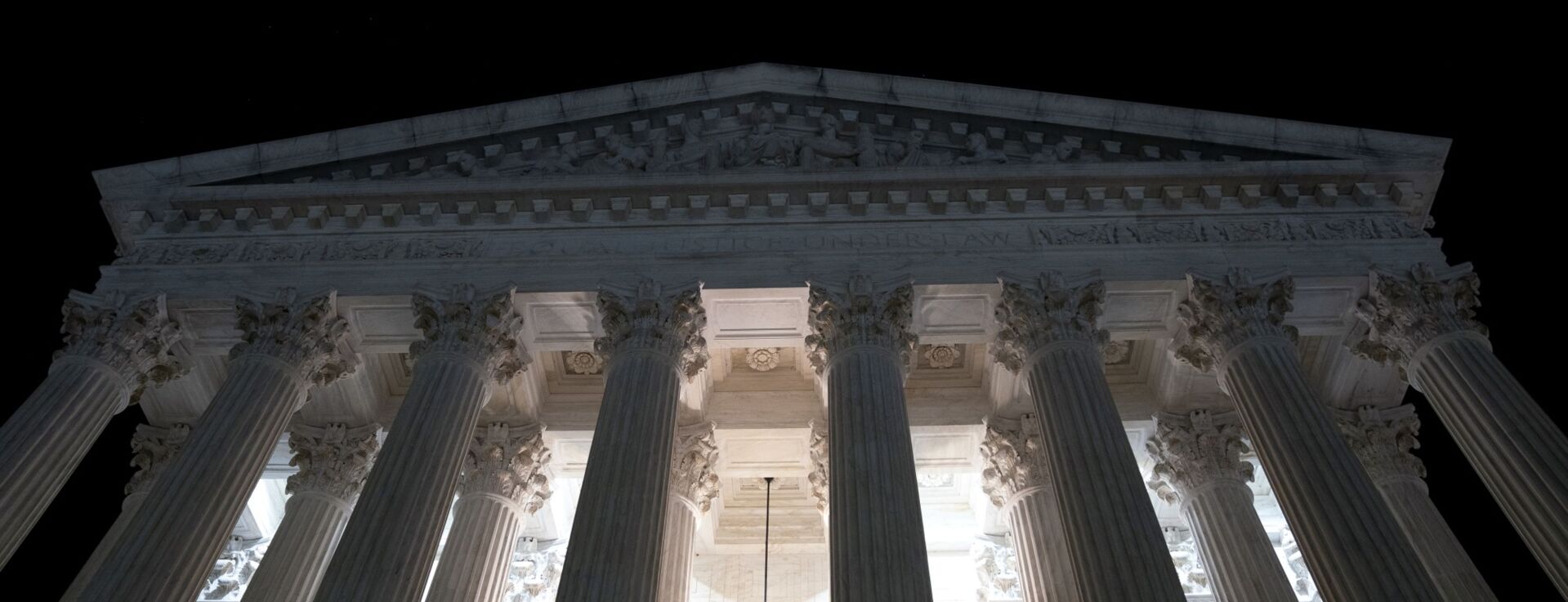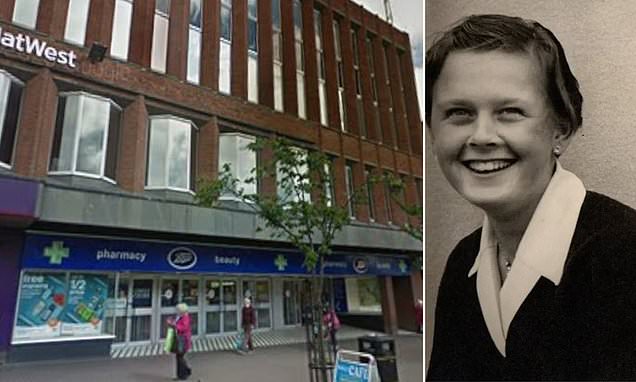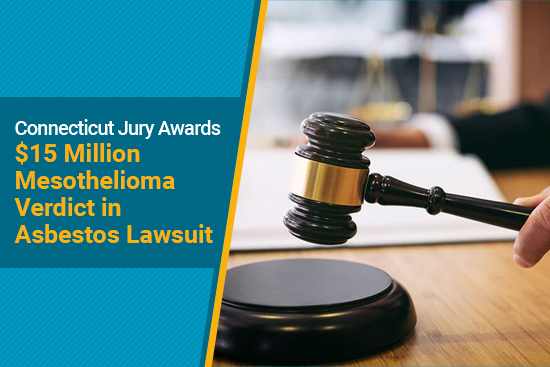 Subscribe online to gain full access to the latest news and your Digital Edition.
Subscribe online to gain full access to the latest news and your Digital Edition.
Supreme Court Affirms Insurer’s Right to Weigh In on Asbestos Bankruptcy Plan – SCOTUSblog
OPINION ANALYSIS
By Ronald Mann on June 7, 2024, at 8:29 am
!The busts on the front of the Supreme Court building
The justices ruled in Truck Insurance Exchange v. Kaiser Gypsum Co. on Thursday. (Thomas Hawk via Flickr)
In another instance of the Supreme Court tackling seemingly minor disputes under the Bankruptcy Code, the case of Truck Insurance Exchange v. Kaiser Gypsum Co. addressed a nuanced issue regarding when an entity qualifies as a “party in interest” under the statute, which grants the right to “be heard on any issue” in Chapter 11 proceedings.
This case involves a conflict between a defunct asbestos company and its main insurer. The debtor will exit bankruptcy without future asbestos claim liabilities, while the insurer will bear most of these claims. The contention lies in whether the reorganization plan should include “anti-fraud” provisions to prevent claimants from filing duplicate claims against multiple asbestos companies.
Section 1109 of the Bankruptcy Code states that any “party in interest” can raise issues and be heard in Chapter 11 cases. Although the statute lists examples such as the debtor, trustee, and creditors’ committees, it lacks a comprehensive definition. Despite this, lower courts ruled that the insurance company could not challenge the plan’s terms because it was not directly harmed by it.
Justice Sonia Sotomayor dismissed this view, arguing that the “text, context, and history [of the statute] confirm that an insurer … with financial responsibility for a bankruptcy claim is a ‘party in interest’ because it may be directly and adversely affected by the reorganization plan.” She described the statute as “capacious,” noting that all listed parties share a common trait: they could be directly impacted by a reorganization plan due to their financial interest in the estate’s assets or their representation of affected parties. For Sotomayor, the term “party in interest” plainly refers to entities potentially concerned with or affected by a proceeding.
Sotomayor highlighted Congress’s historical trend towards promoting broader participation in reorganization proceedings, evolving from limited involvement under the Bankruptcy Act of 1898 to more inclusive provisions in subsequent legislative updates. She emphasized that broad participation is crucial for a fair and equitable reorganization process, allowing diverse interests to intervene and preventing dominant interests from monopolizing the restructuring process.
Given this context, Sotomayor found it clear that reorganization proceedings could significantly impact an insurer’s interests, potentially impairing contractual rights or inviting fraudulent claims. She argued that allowing insurers to voice concerns about such issues aligns with the statute’s purpose. She noted that neither debtors nor claimants have incentives to limit post-confirmation costs, leaving insurers as potentially the only entities motivated to identify problems with the plan.
Sotomayor criticized lower courts for adopting an “insurance neutrality” doctrine, which denies party-in-interest status to insurers whose pre-bankruptcy rights remain unimpaired. She argued that this doctrine is fundamentally flawed because it conflates the merits of an objection with the initial inquiry into party-in-interest status. According to Sotomayor, the correct standard assesses whether proceedings might affect a prospective party, not how a specific reorganization plan actually impacts that party. The insurance neutrality doctrine wrongly ignores other ways bankruptcy proceedings can impose obligations on insurers.
Addressing concerns that a broad interpretation of “party in interest” might enable peripheral parties to disrupt reorganizations, Sotomayor pointed out that the statute only grants an opportunity to be heard, not a vote or veto power. She dismissed these concerns as exaggerated and insufficient to override the statute’s plain language. While acknowledging potential challenges in evaluating truly peripheral parties, she concluded that this case did not present such difficulties.
Ultimately, like many of the court’s bankruptcy rulings, this decision is unlikely to be widely noted or have lasting significance outside lower courts dealing with the “insurance neutrality doctrine.” Since it does not address whether courts should or can include the insurer’s requested provisions, its practical impact remains limited. Attention now turns to Harrington v. Purdue Pharma, expected later this month, which may offer more substantial insights into the Bankruptcy Code’s operation.
Asbestos Mulch Sparks Overhaul of Environmental Protection Laws – Law Society Journal
Snapshot
- Following the NSW Environment Protection Authority’s investigation into asbestos-contaminated mulch across greater Sydney, significant amendments were made to the environmental protection framework.
- The EPA now has enhanced powers to investigate and penalize environmental offences.
- These changes, particularly the removal of several procedural fairness and common law protections, have raised significant concerns among industry stakeholders.
On April 4, 2024, the promoted it as essential for closing ‘critical loopholes’ and enhancing enforcement powers to deter environmental crimes and respond effectively to pollution incidents. However, a closer examination reveals several significant changes that were not widely discussed.
Fleurieu Regional Waste Authority and Alexandrina Council Head to Environment Court Over Asbestos Dispute
 and (max-width: 1140px) {
.tdi_75 {
margin-bottom: 20px !important;
}
.tdi_75 .tdm-descr {
font-family: PT Serif !important;
font-size: 14px !important;
line-height: 1.5 !important;
font-weight: 400 !important;
}
}</p>
<p>@media (max-width: 767px) {
.tdi_75 {
margin-bottom: 20px !important;
}
}</p>
<p>@media (min-width: 768px) and (max-width: 1018px) {
.tdi_75 {
margin-bottom: 15px !important;
}
.tdi_75 .tdm-descr {
font-family: PT Serif !important;
font-size: 13px !important;
line-height: 1.5 !important;
font-weight: 400 !important;
}
}</p>
<p>.tdi_75 .tdm-descr {
color: #000000;
font-family: PT Serif !important;
font-size: 15px !important;
line-height: 1.5 !important;
font-weight: 400 !important;
}</p>
<p>.tdi_75 .tdm-descr a {
color: #ec3535;
}</p>
<p>.tdi_75 .tdm-descr a:hover {
color: #c11f1f;
}
</style>
<p class=) Get an all-access pass to the news and your digital edition with an online subscription.
Get an all-access pass to the news and your digital edition with an online subscription.
Boots Faces Lawsuit Over Alleged Asbestos Poisoning
The family of Anne Lawton, a grandmother who allegedly died from asbestos poisoning, is suing Boots for potential exposure during her employment with the company. Anne began working at the pharmacy at age 15 in 1957 and later claimed she was repeatedly exposed to hazardous asbestos dust during a store refit in Stoke-on-Trent.
In 2019, Anne, a grandmother of four from Cheadle, Staffs, was diagnosed with mesothelioma, an incurable cancer linked to asbestos exposure. She passed away in February 2021 at the age of 77, before her compensation claim against Boots could be heard in the High Court. Her family is now seeking £135,000 in damages, accusing Boots of neglecting to take simple and cost-effective measures to protect its staff from asbestos dust.
Boots is contesting the claim, arguing that they did not breach their duty to Mrs. Lawton and that there was no “foreseeable risk” of her contracting a deadly disease. Judge Vikram Sachdeva KC heard that Mrs. Lawton began working at the Hanley store in September 1957 during a refurbishment that allegedly involved installing asbestos-containing suspended ceilings.
In a statement before her death, Mrs. Lawton described having to sweep the “incredibly dusty” floors regularly, generating vast amounts of dust that staff disturbed as they moved around the store. She recalled that every floor was dusty, including the locker room next to where the ceiling was being fitted, and that she had dust all over her clothes from sweeping storerooms twice daily.
Mrs. Lawton continued to be exposed to poisonous dust after the refit when sent to the store basement, where pipes with damaged lagging were present. She left Boots in 1969-70 after working in the store’s books department.
For her family, barrister Simon Kilvington KC argues that the asbestos in the dust created a “foreseeable risk” of injury and that Boots failed to take any simple and inexpensive steps to mitigate this risk. He noted that part of the exposure occurred after public awareness of asbestos dangers increased post-1965.
John Williams KC, representing The Boots Company Plc, denies that the risk to Mrs. Lawton was foreseeable by the standards of the time and refutes any breach of duty owed to her. He stated that before 1965, it was believed that deadly diseases were only a risk with “heavy and prolonged” asbestos exposure and argued that Boots was not obligated to investigate the pipe lagging in the basement.
The trial is ongoing.
Family Sues Boots Over Death of 77-Year-Old Grandmother Allegedly Exposed to Asbestos at Age 15
The family of Anne Lawton, a former shop assistant who passed away 60 years after allegedly being exposed to asbestos, is suing Boots for £135,000. Anne Lawton, a grandmother of four, began working at the high-street chemist at the age of 15. In 2019, she was diagnosed with mesothelioma, an incurable cancer linked to asbestos exposure. She died in February 2021 before her compensation claim against Boots could be heard in the High Court.
Lawton claimed she was repeatedly exposed to dangerous levels of asbestos dust during a refurbishment of the Boots store in Hanley, Stoke, Staffordshire. Her family accuses Boots of failing to take simple and inexpensive measures to protect its employees from asbestos dust. Boots denies any breach of duty towards Mrs. Lawton and argues that there was no foreseeable risk of her contracting a deadly disease.
According to her lawyers, when Mrs. Lawton joined Boots, the store was undergoing a complete refurbishment, which included installing suspended ceilings containing asbestos. Mrs. Lawton, from Cheadle, Staffordshire, described the floors as “incredibly dusty” due to the work being done.
She recalled being instructed to sweep the floors several times a day, which resulted in dust covering her clothes. Even after the refurbishment, she continued to be exposed to harmful dust in the store’s basement, where pipes with damaged lagging were present. Mrs. Lawton left her job at Boots around 1969-70.
Simon Kilvington KC, representing her family, stated that there is no evidence Boots took any of the “cheap and simple steps” to mitigate the risk of asbestos poisoning. He noted that part of the alleged exposure occurred after a 1965 report highlighted the dangers of even “light and brief” exposure to asbestos dust.
John Williams KC, representing Boots, argued that based on the standards of the time, it was not foreseeable that Mrs. Lawton would be injured. He added that before 1965, it was believed that only “heavy and prolonged” exposure to asbestos posed a risk of deadly disease. He also mentioned that investigating pipe lagging became recommended practice only after the period in question.
The trial is ongoing.
High Court Grants Insurer Permission to Challenge Asbestos Bankruptcy Settlement (2)

The US Supreme Court has ruled that an insurer responsible for paying thousands of asbestos injury claims has the standing to challenge the restructuring plan of a bankrupt wallboard manufacturer. The decision, which was unanimous, allows Truck Insurance Exchange to contest Kaiser Gypsum Co.’s Chapter 11 plan due to its significant financial stake in the outcome. The plan obligates Truck to cover many of the approximately 14,000 claims against Kaiser, with potential payouts reaching up to $500,000 per claim.
Justice Samuel Alito did not participate in the decision. The Supreme Court’s ruling overturns a previous decision by the US Court of Appeals for the Fourth Circuit, affirming that insurers like Truck are “parties in interest” under the bankruptcy code and therefore have the right to be involved in reorganization proceedings.
The court noted that insurers with financial responsibility for bankruptcy claims can be directly and adversely affected by reorganization proceedings in various ways. An attorney for Kaiser did not immediately respond to a request for comment.
This ruling comes as insurers are increasingly taking on more prominent roles in bankruptcies involving mass tort litigation, particularly in Chapter 11 cases involving Catholic dioceses facing sex abuse claims. In many such instances, bankrupt entities utilize insurance policies to pay claims.
Kaiser’s attorneys argued that allowing insurers to object could lead to disruptions by other parties seeking advantage through another entity’s bankruptcy. However, the Supreme Court rejected this argument in an opinion written by Justice Sonia Sotomayor. The court emphasized that insurers with financial responsibility for claims are not peripheral parties and thus have a direct interest in the proceedings.
Kaiser’s asbestos trust also includes a $49 million contribution from its parent company, Lehigh Hanson Inc. Truck Insurance Exchange opposed Kaiser’s plan in the US Bankruptcy Court for the Western District of North Carolina, arguing that it lacked fraud safeguards for the claims Truck was required to cover. Truck alleged that Kaiser colluded with asbestos claimant representatives to include anti-fraud measures for uninsured claims but not for insured ones.
The bankruptcy court had initially ruled that Truck did not have standing to challenge the plan, a decision upheld by the Fourth Circuit last year. The appeals court found that Truck lacked standing because the bankruptcy plan did not alter its rights or responsibilities. However, the Supreme Court rejected this reasoning, known as the “insurance neutrality” doctrine, stating that it conflates the merits of an objection with the question of who is a party in interest.
Justice Sotomayor wrote that this doctrine is conceptually flawed and impractical. Truck argued before the Supreme Court that the absence of fraud safeguards affected it and justified its right to challenge the settlement. During oral arguments in March, Justice Elena Kagan appeared to agree with this perspective.
Truck Insurance Exchange is represented by Gibson, Dunn & Crutcher LLP, while Kaiser Gypsum is represented by Jones Day. The case is Truck Insurance Exchange v. Kaiser Gypsum Co., U.S., No. 22-1079.
Family of Grandmother Who Died from ‘Asbestos Poisoning at Boots’ Sues Company
By Cameron Charters
Published: 11:55 BST, 6 June 2024 | Updated: 11:56 BST, 6 June 2024
—
The grieving family of a grandmother is suing Boots, alleging that her death was caused by asbestos poisoning during her teenage employment at the store 60 years ago.
Anne Lawton began working at the high-street chemist at the age of 15 in 1957. She claimed that she was exposed to significant amounts of asbestos at her workplace in Stoke-on-Trent. In 2019, the grandmother of four from Cheadle, Staffordshire, was diagnosed with mesothelioma, an incurable cancer linked to asbestos exposure. She passed away two years later in February.
Her family is now seeking £135,000 in damages from Boots, accusing the company of failing to implement simple and inexpensive measures to protect her from asbestos dust.
!Mrs Lawton’s family are now suing Boots over her death claiming the firm failed to protect her.
However, lawyers representing Boots deny that the company breached its duty to Mrs. Lawton or that there was a foreseeable risk of her contracting a deadly disease.
According to her lawyers, Mrs. Lawton worked at the branch during a refurbishment that included installing suspended ceilings containing asbestos. Shortly before her death, Mrs. Lawton provided a statement describing how she swept floors covered in dust.
She wrote: “During the refit, the store was incredibly dusty. I was given a broom and told to sweep the floors a couple of times a day. Every floor was dusty, including the locker room, which was next to where a suspended ceiling was being fitted. I remember having to sweep the storerooms at least twice a day. I had dust all over my clothes when I did this.”
!The branch of Boots where Mrs Lawton worked in Stoke-on-Trent from 1957.
Mrs. Lawton eventually moved to work in the books department and left Boots around 1969-70.
Representing her family, barrister Simon Kilvington KC argues that there was enough asbestos in the dust she encountered to pose a foreseeable risk of injury. He also claims that if there had been exposure to asbestos, there is no evidence that Boots took any of the simple and inexpensive steps that could have reduced that risk.
Kilvington adds that part of the alleged exposure occurred after public awareness of asbestos dangers increased significantly post-1965.
On behalf of Boots, barrister John Williams KC contends that the risk of injury to Mrs. Lawton was not foreseeable based on the standards of the time. He also denies any breach of duty owed to Mrs. Lawton as an employee.
Williams notes that before 1965, it was believed that deadly diseases were only a risk with heavy and prolonged exposure to asbestos.
The trial before Judge Vikram Sachdeva KC continues.
$15 Million Mesothelioma Verdict Awarded in Connecticut | Mesothelioma Guide
Family Awarded $15 Million in Mesothelioma Case Against Vanderbilt Minerals
In 2023, the family of a man who succumbed to mesothelioma was awarded a $15 million verdict in an asbestos lawsuit in Connecticut. The Connecticut Superior Court jury held Vanderbilt Minerals accountable for the victim’s asbestos exposure, which led to his fatal cancer. Vanderbilt Minerals, a global supplier of raw materials and chemicals, operates an office in Norwalk, Connecticut.
Asbestos Exposure Details
The victim, a father of three adult children, was exposed to asbestos-contaminated talc while working as a process engineer at the General Electric plastics plant in Pittsfield, Massachusetts, from 1965 to 1967. During this period, General Electric sourced asbestos-laden talc from International Talc Co. for producing phenolic molding compounds. Workers, including the victim, handled bags of talc, dumping them into hoppers as part of the manufacturing process.
The talc originated from the Arnold Pit in upstate New York, known for its asbestos content. Asbestos exposure is the sole cause of mesothelioma, a rare and aggressive cancer affecting the lung or abdominal lining. It can also lead to lung and ovarian cancers.
Despite working for General Electric, it was International Talc’s business practices that caused the victim’s asbestos exposure. The company’s collection and sale of asbestos-tainted talc to General Electric were identified as the primary misconduct.
During the trial, evidence showed that Vanderbilt Minerals acquired International Talc Co. in 1974. The jury concluded that Vanderbilt Minerals was responsible for the asbestos exposure resulting from International Talc’s operations.
Understanding Asbestos Contamination in Talc
Asbestos and talc are naturally occurring minerals often found together in regions like the Arnold Pit. The connection between talc and mesothelioma arises from the potential for asbestos contamination during mining. This contamination can occur when talc is extracted for use in plastics or health care products, leading to small asbestos fragments mixing with talc.
Health and beauty companies, such as Johnson & Johnson, face numerous lawsuits from consumers who developed cancer after using talc products. Similarly, workers in plants that utilized talc faced significant asbestos exposure risks.
Throughout the 20th century, plant workers handling talc were frequently exposed to asbestos. If you have mesothelioma and worked in a plastics plant or any facility involving talc or asbestos handling, our patient advocates can help identify your exposure source and liable companies. Contact patient advocate Carl Jewett at [email protected] for more information.
Sources & Author
1. Bridgeport jury awards $15 million in Milford man’s death in asbestos case involving Norwalk company. The Middletown Press. Retrieved from: Middletown Press Article. Accessed: 05/29/2024.
About the Writer: Devin Golden
Devin Golden is a content writer for Mesothelioma Guide, producing informative content on mesothelioma across various platforms, including the Mesothelioma Guide website and social media channels. His goal is to make complex mesothelioma information accessible and helpful for patients and their families.
—
For more detailed information about your diagnosis, treatment options, and ways to improve your prognosis, get your free Mesothelioma Guide Book here.
Stay updated with monthly mesothelioma news by signing up for our newsletter here.
Paterson Council Relocates Meetings for 3 Months Due to Asbestos in City Hall Ceiling
Paterson City Hall Delays Council Meetings Due to Asbestos Discovery
PATERSON — Municipal council meetings at Paterson City Hall will be postponed for at least three more months following the discovery of asbestos in a collapsed ceiling from March.
City officials have not provided a specific timeline for the repairs, but Paterson has allocated $2 million for the project. Mayor Andre Sayegh’s chief of staff, Habib Kader, announced that all council meetings through the end of August will be held at the city-owned broadcast studio located at 77 Ellison Street, approximately three blocks from City Hall.
The ceiling collapse was caused by a leaky air conditioning unit on the roof, rather than a roof leak, Kader explained. The city plans to replace the air conditioner as part of an upcoming energy savings improvement program.
“We had the Health Division test the ceiling plaster for asbestos, and the results were positive, necessitating specialized removal,” Kader said. “Vendors experienced in asbestos removal have indicated they need to disassemble the rooftop unit to fully assess the damage.”
Kader added that the city is currently disassembling the rooftop unit, conducting air quality tests, and obtaining final estimates for the interior work. More details on costs and timelines will be shared as they become available.
City Council President Alex Mendez was unavailable for comment. However, Council Vice President Luis Velez suggested that the city consider holding council meetings at alternative venues that would benefit the community.
The broadcast studio on Ellison Street has a smaller capacity compared to the council chambers. Despite this, Paterson activist Corey Teague, who frequently attends council meetings, expressed no concerns about using the studio until repairs are completed.
“To me, it’s fine,” Teague said.







